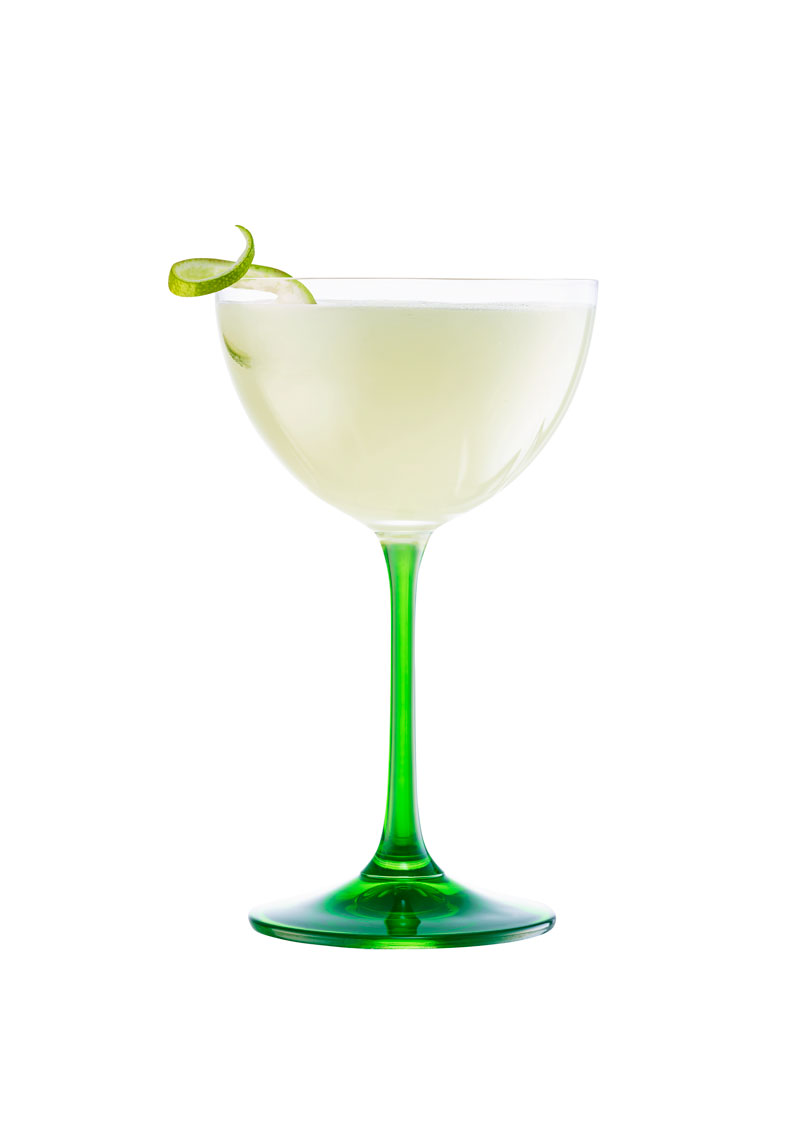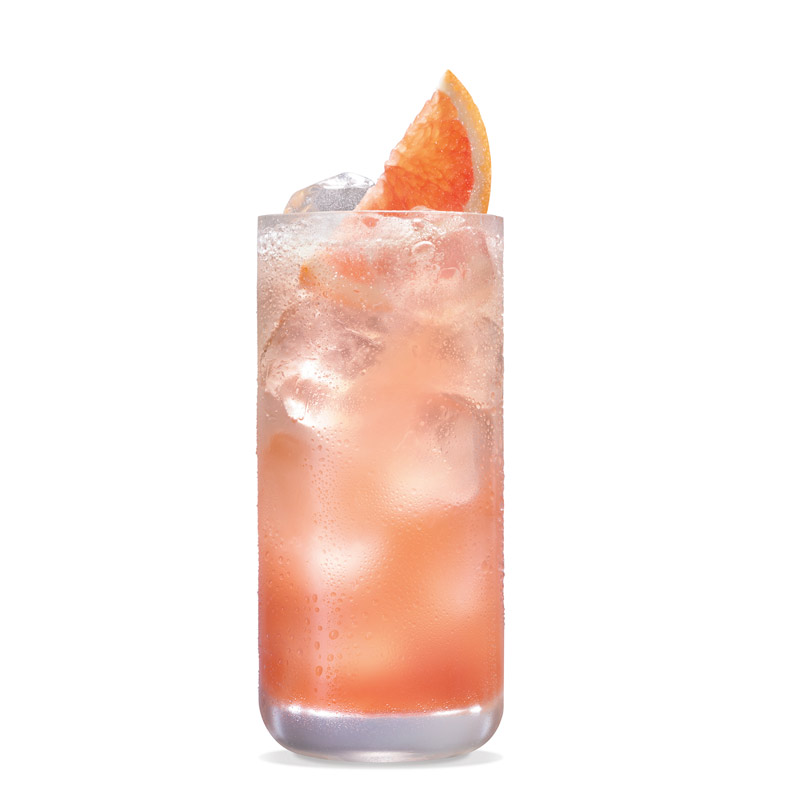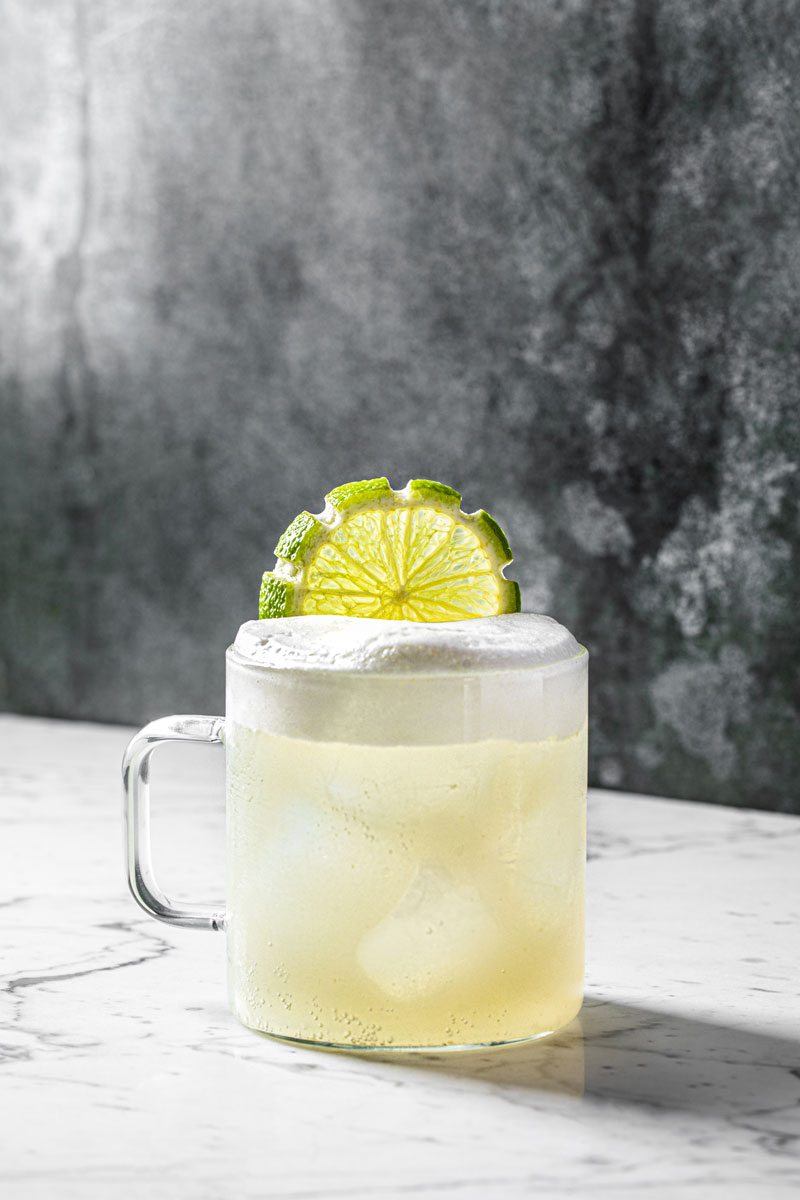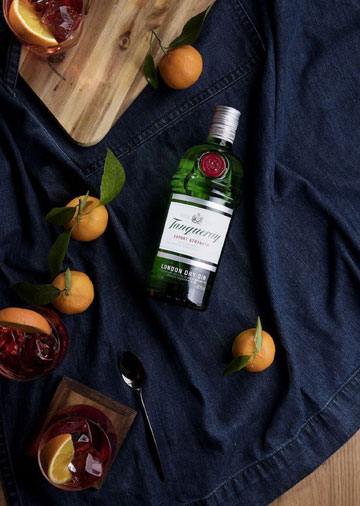
Summer is all about long, languorous days sipping a gin and tonic with close friends. We speak to Shantanu Sengupta, Diageo India Brand Ambassador, about the provenance of the botanical dry gin, dispelling the myths around it, delicious cocktails to drink right now, and how to pair it – yes you can do that too! – with the right dishes.
 Tanqueray London Dry Gin
Tanqueray London Dry Gin
Can you tell us about a London Dry Gin – what is it about its process and provenance that makes it so special?
Before we get into the conversation of London Dry Gin, let's understand what a gin is. Gin is a distilled alcoholic beverage made from grains and flavoured with juniper berries and other botanicals like citrus peels, angelica, coriander, liquorice, and other selected herbs and spices.
The term London Dry Gin comes from botanical flavourings that are re-distilled with a neutral spirit. These flavourings are approved natural seasonings that exude the distillation process.
Way before London Dry Gin was in vogue, during the 16th and 17th centuries, Britons enjoyed a juniper and citrus flavoured spirit called the ‘Water of Fruits’. However, the invention of the Coffey Still or the Column Still in the 19th century had the capability of producing highly neutral spirits up to 96 percent ABV. There is where the London Dry Gin came into being.
To call a gin London Dry Gin, it must meet certain stringent specifications laid down by the European Union. Specifications include: It must be dry and contain no more than 0.1 grams of sweetening ingredient per litre of the final product and it must not be coloured in any way, among others.
 Shantanu Sengupta, Diageo India Brand Ambassador
Shantanu Sengupta, Diageo India Brand Ambassador
When was it first made, and what are some of the earliest stories about it?
Aeneas Coffey, a Dublin excise officer, patented the Column Still (the continuous distillation process) in the early 1800s. This produced a consistent pure grain high-quality neutral spirit at a pre-determined strength. It was called ‘dry gin’ because it was clear and unsweetened and flavoured with subtle aromatic botanicals like orris roots, coriander, angelica, and cassia. Since most of the distilleries producing this dry gin were based in London, they preferred to call it the London Dry Gin and the legacy continued.
Is it true that the gins back then had quinine, or was it the tonic water?
Many of us think that gin contains quinine. In reality, gin does not contain quinine. Quinine was the key ingredient in tonic water. Tonic water is a carbonated drink that has dissolved quinine. Quinine is obtained from the bark of the cinchona tree and has multiple medicinal benefits. In the 1700s, George Cleghorn, a Scottish doctor, discovered that malaria can be treated with quinine. This gave rise to the tonic water drinking culture for British soldiers stationed in India. Since quinine was extremely bitter, the culture of drinking tonic water with gin became popular in the 1800s as Gin & Tonic made a great combination. Though through the years, the quinine content of tonic water has been reduced to a great extent.
Today, what is it that goes into a great gin, in terms of herbs and other ingredients?
Juniper berries are a must for all gins. A gin is not the same without juniper berries. Besides juniper berries, there are other aromatic botanicals like coriander, liquorice, cassia bark, dried orange peel, angelica, clove, mace, nutmeg, lemongrass, basil, cardamom, thyme, rosemary, cucumber, peppercorn, hibiscus, and the list go on. It all depends on the gin makers to select their ingredients exclusively for their brand recipes.
There are many gin brands in the world – what should you look out for when choosing a gin?
Always choose a brand that suits your palate. There is an array of brands in the market and recently a lot of homegrown brands have entered the space. Award-winning gins like Gordon’s London Dry Gin have subtle flavours of juniper, coriander, and angelica, and parallelly, Tanqueray has all those flavours along with liquorice. Select a gin that is flexible and can be consumed straight up or on the rocks. Also, it's recommended to incline towards a liquid that makes for a great cocktail.
 Tanqueray Negroni
Tanqueray Negroni
Gin has made a comeback quite a few years ago – what are some of the best ways to drink it? And is it a popular drink in bars and restaurants?
The popularity of gin has shot over the last couple of years especially amongst drinkers in their late 20s and early 30s. The millennials love to try a new set of innovations with cocktails. There is a paradigm shift from white spirits like white rum and vodka to gin. Consumers are now looking for gin cocktails like Gimlet, Pink gin, Gibson, Tom Collins, and even Negroni. And yes, the bartenders are loving the gin cocktail orders coming in.
What are three fun cocktails one can try at home for friends?
Here are some very easy Gin cocktails:
 Gordon's Gimlet
Gordon's Gimlet
Gordon’s Gimlet
Ingredients:
60 ml – Gordon’s Gin 30 ml – Lime Cordial
Method:
Shake ingredients in a shaker with ice. Strain into a chilled cocktail glass. Garnish with a lime twist
 Tanqueray Mandarine Collins
Tanqueray Mandarine Collins
Tanqueray Mandarine Collins
Ingredients:
45 ml – Tanqueray London Dry Gin
20 ml – Mandarine orange juice
10 ml – Lime juice
10 ml – Sugar Syrup
Soda for top-up
Method:
Shake all ingredients with ice and strain into an ice-filled, tall glass. Garnish with a slice of orange and a cherry.
 Cadiz Fizz
Cadiz Fizz
Cadiz Fizz
Ingredients:
45 ml – Tanqueray N° Ten
20 ml – Dry sherry or dry white wine
20 ml – Lime juice
15 ml – Chamomile tea liquor
10 ml – Sugar syrup
2 dashes – Orange bitters
Method:
Shake all ingredients with ice and strain into a tall glass. Top up with soda. Garnish with a grapefruit slice.
 Bee's Knees
Bee's Knees
Bee’s Knees
Ingredients:
60 ml – Tanqueray London Dry Gin
20 ml – Lime juice
30 ml – Orange Juice
2 teaspoons – Honey Syrup (honey mixed with hot water 1:1)
Method:
Stir or shake all ingredients with ice and strain into a chilled cocktail glass. Garnish with yellow lemon rind (optional).
What are the must-have ingredients if you are making a nice gin cocktail at home?
The most preferred ingredients would have to be - lime juice, lime cordial, sugar syrup, honey, basil leaves, orange, lemonade, tonic water. If you have vermouth, you can try making a Martini with it.
What is your favourite gin and tonic recipe?
I like Tanqueray & Tonic with fresh basil leaves and a touch of fresh orange. This recipe can be easily made at home.
 Tanqueray and Tonic
Tanqueray and Tonic
Ingredients:
45ml – Tanqueray London Dry Gin
4 – Basil leaves
Orange juice – from a quarter of an orange
150 ml – Tonic water
Method:
Fill glass with ice, pour Tanqueray London Dry Gin, orange juice, slapped basil leaves and top up with tonic water.
What kind of nibbles or food is gin best paired with?
Gin, especially Gin & Tonic, usually comes as an ‘aperitif’, which means we drink it at the beginning of the meal with appetizers. So, you can have it with any snack or starter that you might be having at home. There is no rule you need to abide by. However, I would suggest a few dishes that would make the beginning of your meal exciting.
-
Crispy fried Calamari
-
Chicken & Cheese salad
-
Pineapple, Ham & Cheese salad
-
Scotch Eggs
-
Sauteed Mushroom & Spinach with Burnt Garlic
-
Fish Kebabs
-
Honey Glazed Prawns
-
Spring Rolls
-
Potato & Cheese Croquettes
-
Tomato, Basil & Olive Bruschetta
FOLLOW US ON INSTAGRAM

Lifestyle Insider is a kind of junction point, connecting people with diverse interests that touch on the more luxurious aspects of lifestyle – fashion, design, travel, food and spirits, art, watches and jewellery, cars, yachts, and aviation, and technology. People today don’t fit into boxes and categories. In our individual ways, we are interested in diverse themes, products, and the challenges that face our world today. You will judge how well this effort of mine caters to your passions and proclivities.
Lifestyle Insider is a showcase of all that is beautiful and luxe. Behind every creation, is a designer, chef, entrepreneur, or a design maison. I have delved into my own appreciation for objetsde luxe that I have admired over the years – be it a love of fashion from the world’s top Parisian and Italian fashion maisons and their ’90s muses, or the care that goes into sari and Indian textile collections in my own family. Growing up on four continents, as the daughter of a former Indian Ambassador, I’ve seen a remarkable array of historic places and met a myriad people. My aim is to bring my world view into this website, a curation of what I find particularly stunning, unique, and newsworthy.
It’s an exciting time for brands all over the world. With change comes opportunity. With the global ‘reset’ and uncertainty on many fronts, there is a chance to write a new script. Let’s be those pioneers.
A bit about me:
A luxury and fashion journalist with 25 years of experience in publishing and magazine journalism, I have edited some of India’s top fashion and luxury magazines. I got my BA in Comparative Literature from UC Berkeley, and went on to receive my Master’s in English and French from the University of Strasbourg, France. I have also studied German and Film. I live in Gurugram, India, and look forward to once again exploring our world with a new-found freedom.
Priya Kumari Rana
Founder and EditorContact Us
Mail us @ lifestyleinsiderindia@gmail.com





